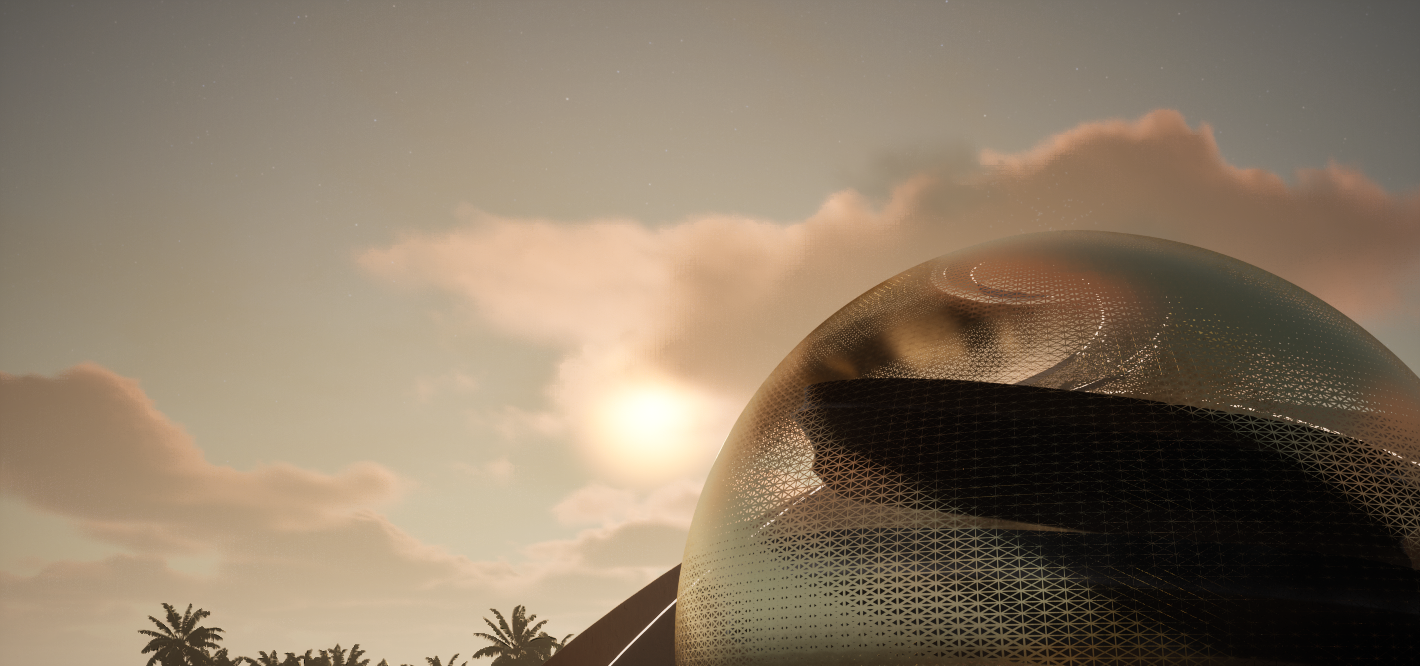Project Name: S-Fear
Team members: Svitlana Kolesnichenko, Melissa Paola Quintana Londono, Freddy Mendoza, Kajetan Szostok
Softwares used: Autodesk Maya, Unreal Engine, Metahuman, Da Vinci Resolve, Adobe Photoshop, Eleven Labs.
Our team created VR integrated immersive environment, helping cope with anxiety disorders like phobias, avoidance behaviors, trauma and distress on an example of Acrophobia (fear of heights) and Thalassophobia (fear of deep water). We have decided to focus on these two spatially contrasting phobias from the Anxiety Disorder spectrum, creating a common safe space with multiple intertwining pathways leading gradually toward two Extremes in form of the spheres.
Our goal was, to make the professional immersive and actually working help accessible to all anytime, anywhere, while not competing with therapists whose role would be always crucial and irreplaceable in treatment Anxiety Disorders. Some of the phobias though, without use of immersive solutions wouldn’t be possible to successfully carry out Gradual exposure therapy treatment proven to be effective in field, both VR and live.
The design and build process starts with the analysis of the phobias, morphologically the triggers of the phobias are opposite, We adopt a dual approach, vertically, to generate gradual exposure therapy and horizontally to blend and contain the program of the building the idea was to recreate and emulate scenarios where you can confront and expose yourself to this fear. build fluid elements as bridges and ramps connecting levels where we condense the phenomenology of the phobias, the peak of these points are the spheres, levitating in harmony with the envelope.
The transparent skin and just the veins are representative of vulnerability of the person entering the bubbles. They expose themselves to the treatment bare and with openness. Fear lives within our body and is itself very much anatomical too. To achieve that we used Metahuman and Unreal Engine. The observable variations in blood circulation serve, amongst others, as indicators reflecting the physiological response to emotional states such as relaxation or heightened anxiety. The potential in the Avatar design is to incorporate and live stream this data (from iWatch/Garmin/other watches) in a form of visual representation (Avatar veins color change, pulsation speed etc.) and hence be a real-time insight on the Anxiety level of the person (visible tracker). This could enable a possibility to conduct the therapy with the presence of a professional as a Companion Avatar, knowing and seeing how the spaces in question affect “the patient” and therefore allow to interact with him/her/them accordingly.











